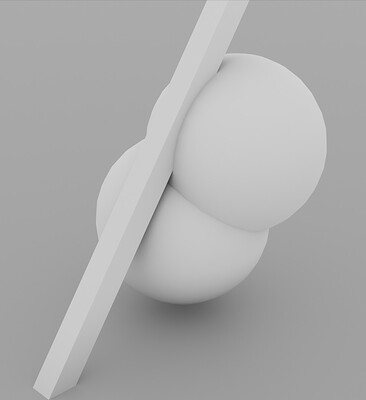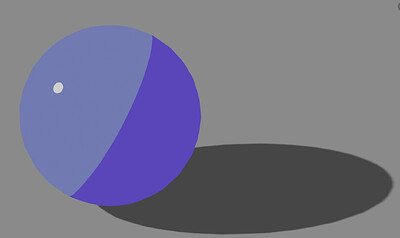What is best way to shade on you opinion?
Is ambient occlusion way to go?
That’s a very open-ended question. It depends on what stylistic effect you want to achieve. I can tell you how to go about it if it’s anime style, but for realistic or anything in between the answers will be very different ![]()
If you’re not intentionally stylizing for simpler lighting, I think, yes, some ambient occlusion is very welcome in addition to bigger and more fundamental shadows.
I suggest browsing for artwork(s) that you particularly admire and trying to recreate similar lighting techniques. First analyze it and try to identify which distinct lights are applied. You can work from there.
I like using a layer set to Multiply for additional shading. I’ll do my drawing/painting as usual which does include shading, but to make it pop even more, I go over it on a multiply layer with an airbrush, so it doesn’t effect the strokes of the original drawing, but adds extra depth where needed. Especially if it’s a coloured shadow.
Or for a more basic cartoon style, I’ll do all the flats and then use the multiply layer with one colour - say a light grey - and sweep it over the places where I want the shade. (Apart from skin tones, the grey doesn’t look so good on those).
I approach digital painting the same way I do artwork in traditional media. I try to remember what a very good art teacher told me:
Look for reflected light.
Look for the half tones.
Look for the edges: lost, hard, soft
Remember:
Put the right color in the right shape, in the right spot.
Shading (from lightest light to darkest dark)
Cast shadow usually has a hard edge, form shadow usually has a softer edge.
Overly saturated colors & outlines make a painting look cartoony
After putting the desired color in the right place, I sometimes like to use a blending brush that suits my need at the time. I also like the bushes that can vary opacity by pressure control, then I don’t have to use a blending brush much at all.
I also use just one layer but sometimes when painting people, I’ll put hair on a different layer, or when painting animals, I’ll put whiskers on a different layer. For me, the colors blend better that way.
Ambient Occlusion yes!
Are ambient oocclusion and cell shading the same?
There is not really a good or bad way to shade. It depends of how your workflow is, what you are drawing, what you want your project to look like. In the end you have to find out what works best for you.
A lot of animators and comic artists I know use the multiply blending mode and a purple/pink or blue color. Traditional painters often just use colors and paint or mix them on top without any blending mode.
One of the coolest but also one of the most complex ways for shading I ever saw was somebody who used Blender to render a sphere with the needed material, color and lighting just to use this picture as color palette and highlight/shadow reference.
I personally prefer a blendig mode that is called “Shade (IFS Illusions)” in Krita.
I also heard there is a blending mode for Lambertian reflectance coming to Krita which is supposed to give you easy way to control shadows and highlights, but i’m not sure if it’s already in 5.2.
They are not the same. I suggest you look up the terms in place like Wikipedia, it will be a better explanation than what I can do here.
But in short:
- Ambient occlusion is a soft shadow occurring in tight places and contact points, like cloth folds and cracks.
- Cel shading is a simplified shading technique often seen in comics or cartoons. It uses hard edges between light and shadow and there are no soft shadows with gradients.
However, especially in comic-like or anime illustration, there are shading styles that are somewhere between cel / toon shading and realistic shading. Typically great illustration use a mix of various lights and “realism” levels to achieve a desired artistic impression.
Thank you, so basically cel shading is simplifier version of ambicent occlusion?
No - Ambient occlusion means that the ambient light is being blocked (occluded). It’s not really a shading style or technique*, it’s part of what makes up light and shadow in a realistically rendered scene. It occurs where there is little space for reflected light to bounce, so produces the darkest shadows in a scene.
Cel-shading is a simple way of representing light and shadow traditionally used in animation (‘cel’ comes from animation cels). It uses only a few flat values to give a rudimentary impression of form, so is not a realistic shading style.
*It can be considered a technique in computer-generated images - particularly in video games where ambient occlusion is applied to help give more realism in an environment and objects to read well. It’s typically faked in games, but ray-traced solutions are starting become more common and produce more realistic results.
Sorry but i still dont understand. My english is not perfect.
It is difficult to explain in very simple terms. But you are already including occlusion to an extent in your paintings.
It is the areas in shadow where objects are close together and ambient/reflected light cannot easily reach, so the darkest shadows are there.
I guess it can’t be helped ![]() Pictures time.
Pictures time.
Ambient Occlusion - the areas with soft shadow come from the ambient light (the environment). There is no direct light source. It happens because objects are close together and block some of the scattered light.
Cel / Toon shading - Direct light coming in from the left side. The sphere is colored in distinct, flat shades. A highlight suggests a hard surface.
I’m not a Blender expert, it’s just something simple I put together quickly ![]()
For me I like creating a new layer then painting over my characters in really dark purple, then I turn the opacity down from 25-30% depending on how dark you want the setting to be
This topic was automatically closed 30 days after the last reply. New replies are no longer allowed.



